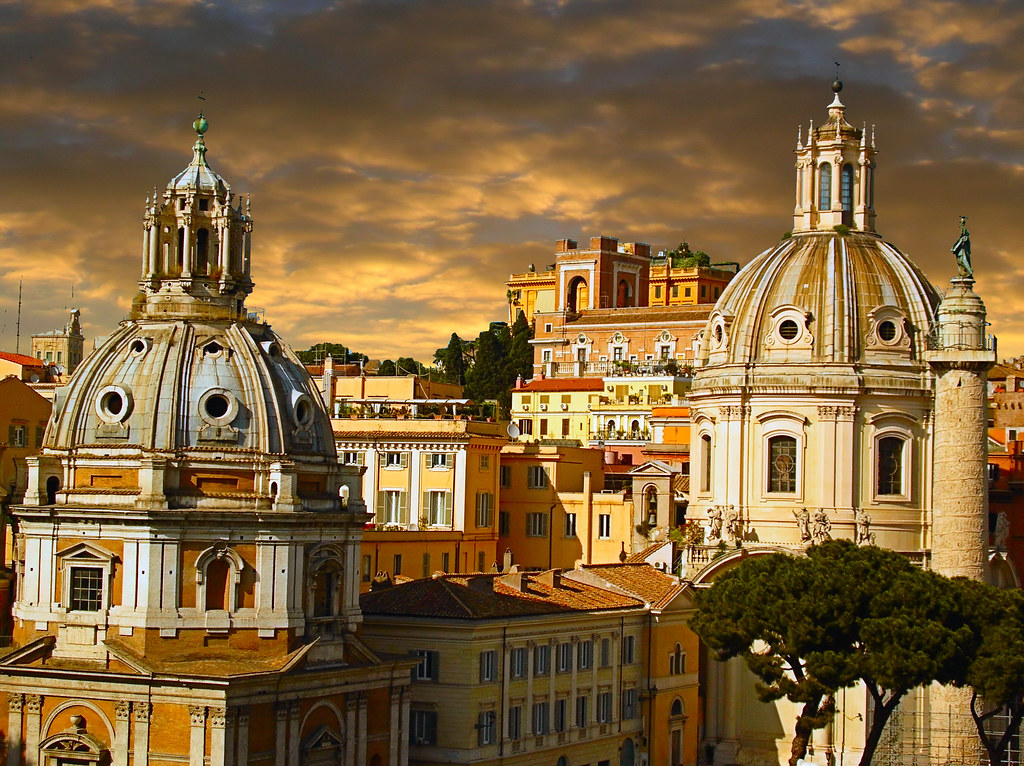
A Short Guide to Heavenly Rome
 Capital of modern-day Italy and the ancient Roman empire, Rome is one of the best European cities to view the past intertwined with the new, to sample one of the best cuisines in the world and to marvel at the buildings that make up one of the religious capitals. It is a large city made up of nine districts, all of them worth visiting.
Capital of modern-day Italy and the ancient Roman empire, Rome is one of the best European cities to view the past intertwined with the new, to sample one of the best cuisines in the world and to marvel at the buildings that make up one of the religious capitals. It is a large city made up of nine districts, all of them worth visiting.
When to go?
Avoid August – many shops and restaurants will be closed, and it will probably be uncomfortably hot and sticky. April-June and September-October will provide mild days and cool nights and January-February can be miserably cold and wet. July will of course provide hot weather for eating al fresco, and December is a time for the atmospheric Christmas markets.
What to see and do
Visiting the remains of ancient Rome is a must. As well as glimpses of it that can be seen around the city – old stones have been used in newer buildings, parts of the old city wall can still be seen and a trip to the forum and Colosseum must be made.
The Pantheon which has inspired the architecture of city halls, museums and universities worldwide is still in a very good state of preservation and another one for your must-see list. And if you happen to be in Rome mid-May there is a 7-10 day period when every archaeological site, public landmark and museum is free and accessible to all.
Visit some churches – there are over 900 to choose from in Rome, the most famous being St Peter’s although technically speaking this is in the Vatican state and not in Rome. An acquired taste for some, this ostentatiously decorated basilica is at the centre of Vatican City life. The art in the corridors leading to Michelangelo’s ceiling at the Sistine Chapel are worth seeing as well as his famous artwork.
Go walking – take in the glorious views from one of the surrounding seven hills or seek out the little streets and marvel at the hidden courtyards and Italian way of living.
If you fancy a trip out of the city, try hiring a bicycle and cycle part of the ancient Appian way that linked Rome to the rest of Italy.
Where to stay
A great value choice is the Excel Roma Montemario. Situated in the suburbs of Rome, the centre is accessible via a short bus journey. Great value for money and it has very quiet surroundings, away from the hustle and bustle.
The Residenza Domiziano is a more expensive option but the friendliness of the staff and central location makes up for that.
Where to eat
There can be nothing better than an authentic Italian pizza. In Rome try a flat and crispy one in the Da Remo pizzeria, but get there early in the evening or you’ll have to queue.
Le Mani In Pasta is a good value choice for fresh pasta in the Trastevere district (and there are many other choices in the area).
If you want to explore authentic Roman cuisine in a seductive atmosphere you should visit Osteria St.Ana in 68, via della penna. The food here is to die for. The menu offers a rich selection of typical dishes of the region. Try for instance the ‘carciofo alla giudea’ which is an artichoke deep-fried head-down in olive oil and seasoned simply to perfection. The taste, texture and crispiness are phenomenal. Typical of the region’s cuisine – simple, homely and divine.
Why Rome?
Its beauty, its history, its food, its character – Rome is worth seeing for all these reasons and more.
Guest post by:
Julie McNamee is a seasoned traveller and writer. She regularly writes for Spa Travel, an online agency offering travel packages & cheap city breaks form the UK to worlwide destinations.




you mention in mid may “every archaeological site, public landmark and museum is free and accessible to all”. As I will be in Rome during this time frame, I was hoping you could point me in the right direction so that I may read up on this more.